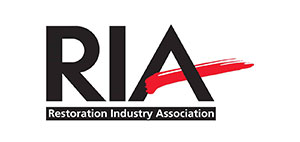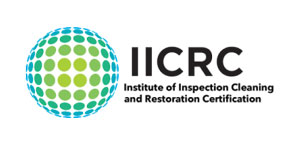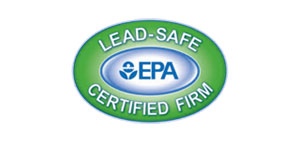Did you know over 14,000 people in the U.S. face water damage at home or work daily? This fact shows how vital it is to know what to do and what not to do after water damage. The right steps are key to avoid more problems and ensure things get back to normal. If you don’t take the right steps, you could face dangers like electrical issues, mold, and damage to your building.
After water damage, it’s important to steer clear of common mistakes. Without the right knowledge, trying to fix the damage can make things worse. This guide will help you avoid these mistakes for a safer recovery from water damage.
Key Takeaways
- Water damage can quickly escalate without proper precautions.
- Avoid using electrical appliances in wet areas to prevent accidents.
- Professional water damage restoration services are essential for safe recovery.
- Immediate, correct actions can prevent long-term structural issues.
- Improper cleanup can lead to mold growth and health risks.
Introduction: The Importance of Proper Water Damage Management
Managing water damage well means taking many steps from start to finish. It’s key because not doing it right can cause big problems later. Knowing how to spot and fix water damage is vital for a good fix plan.
Water damage can weaken buildings and cause mold, which is bad for health. Trying to clean up on your own can make things worse. Experts in water restoration check out the damage to find all the problems, old and new.
Understanding how pros do water restoration is crucial. They check everything carefully to stop more damage and health issues. They make sure every step, like removing water and fixing things, is done right. This shows why managing water damage well is important for keeping property and people safe.
Don’t Use Electronics in Damaged Areas
After water damage, it’s key to focus on electrical safety. The need to get things back to normal can be strong, but using electronics in waterlogged areas is risky. Water and electricity together can cause electrocution, a big water damage hazard.
Follow these important steps:
- Power Down: Turn off the power to the affected areas right away. This cuts down the risk of electrical shock.
- Avoid Contact: Don’t touch electrical appliances or outlets until they’re dry and checked by a pro.
- Professional Inspection: Before using electrical devices again, make sure a certified electrician checks the electrical system’s safety.
- Use of Generators: If you need temporary power, don’t use generators inside to avoid carbon monoxide poisoning.
Knowing the risks of water damage and taking steps for water damage electrical safety can stop more damage and keep you safe. Always get professional advice before fixing or using damaged electronics in waterlogged areas. This ensures they don’t become dangerous.
Don’t Attempt to Clean Up Contaminated Water
When dealing with water damage, it’s key to know the difference between clean and contaminated water. Don’t try to clean up contaminated water, like Category 3, if you’re not trained. This type of water comes from things like hurricanes, sewage backups, and can be very dangerous.
Trying to clean Category 3 water without training is risky. This water has harmful bacteria, viruses, and other dangerous stuff. It can make you very sick and make the damage worse.
Experts are trained to clean up contaminated water safely. They use special gear and cleaners to make areas safe again. They follow strict rules to protect your health and clean everything properly.
So, always call experts for Category 3 water problems. They have the right tools and knowledge to fix things safely. Their help is crucial to make your home safe and livable again.
Don’t Leave Wet Items Together
After water damage, it’s key to separate wet items. This helps prevent mold and manage dampness. Leaving things like clothes, books, and paper together can lead to mold and mildew. This makes fixing things harder.
It’s important to separate and dry items quickly. Here are some steps to follow:
- Separate clothing and textiles, and hang them in a well-ventilated area to dry.
- Spread out books and paper goods, using fans or dehumidifiers to speed up the drying process.
- Elevate furniture and other items off the floor to prevent prolonged exposure to dampness.
Managing damp materials means drying items fast. Doing this helps with drying and lowers mold risk. It makes your space safer and healthier.
Avoid DIY Repairs for Soggy Ceilings and Floors
Water damage to ceilings and floors can weaken a building’s structure, putting people at risk. Trying to fix these problems yourself can make things worse. Water damage DIY risks include making weak spots even weaker.
Fixing soggy floors is complex and needs special skills and tools. If you try to do it yourself, you might cause floors to collapse or other big problems.
It’s smart to get help from professionals for ceiling repairs. They know how to fix these issues safely and right. They use the latest methods and tools to keep the building safe while they work.
Even though DIY might seem cheaper, the dangers are much bigger when dealing with water damage in ceilings and floors.
Don’t Delay the Restoration Process
When you face water damage, you must act fast. Waiting too long can lead to mold growth, damage to your home’s structure, and higher repair costs. Taking quick action can lessen the damage and keep you and your family safe.
Putting off water damage repairs makes things worse. Moisture can turn into mold, causing more problems and health risks. Also, water damage might weaken your home’s structure, making it unsafe.
- Contact a certified water damage restoration company immediately.
- Ensure thorough inspections to identify and address hidden moisture and mold growth risks.
- Take part in the early water damage response to minimize damage levels and recovery duration.
Getting professionals to fix water damage early helps a lot. It reduces damage and makes your home safer and healthier. The sooner you act, the less damage and cost you’ll face. This shows how urgent water damage restoration is.
Don’t Attempt to Redecorate Immediately
After water damage, it might seem right to start redecorating quickly. But, it’s important to wait. Moisture can still be in walls, floors, and other parts of your home. If you paint over damp surfaces, the paint might peel or stain.
It’s crucial to have experts check for moisture before redecorating. They make sure all areas are dry. This step helps avoid redoing work and keeps your new decor looking good.
Start renovations only after experts say your home is dry. If you don’t, you might face problems like mold or weak structures. Getting a professional moisture check can save you time, money, and effort. It makes your renovations last longer and work better.
Conclusion
Dealing with water damage requires smart choices and careful steps. Knowing what not to do helps homeowners avoid risks. This article shared important tips: don’t use electronics, don’t clean contaminated water, and don’t stack wet items.
Also, avoid fixing structural damage yourself, start the restoration quickly, and wait before redecorating. These steps are key to handling water damage right.
Working with experts like Restoration 1 is a smart move. They offer skilled help and peace of mind. These pros do a deep clean and fix things, making your property like new again.
Following the right advice and getting professional help can greatly improve your situation. Homeowners should act fast, focus on safety, and trust experts with water damage recovery. These actions help now and protect your property’s value later.





